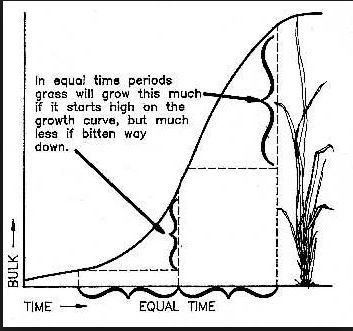Managing grass after rainfall
Friday, 19 June 2020
Currently, across most of the UK, soil moisture deficits are severe, with over 75 mm of rain needed to return the soil back to field capacity.
Many farmers are feeding supplements to ensure demand is met while trying to preserve some ground cover. The cover will also shade the ground from the baking heat and help to reduce further moisture loss. It is important to try and not eat pasture down too low (less than 3 cm) as it will take longer to recover when the rain comes (Figure 1).

Figure 1. The impact of grazing too low on recovery time
Even with the recent rainfall, it is important that supplements are maintained to ensure grass has a chance to recover. This is likely to take around 21 days to allow the grass plants to rebuild their roots reserves and to push up some leaves before the leaves are removed by a grazing animal. It could be that you maintain animals on sacrifice fields that may need reseeding or can be allowed to recover later in the year.
Currently, the lack of moisture is affecting the uptake of nitrogen (N), so there is no value in spreading it, just in case. It is likely that after the first rain, N that has been mineralised in the soil or not utilised from previous applications will drive the recovery growth, but additional N will be needed to boost grass production, especially if silage cuts are still required. Remember to only apply N when soils are moist enough for active growth, otherwise N will be lost to the environment. The response rate per kg N may vary from 10–15 kg DM on high-fertility sites; it won’t be as high as in the spring.
Parasites are likely to be a problem with the recent rainfall, as although the dry weather has reduced the parasites available for ingestion, the larvae would have just moved into the soil and are likely to return once there is moisture. Regular monitoring of faecal egg count (if possible) or liveweight gains to ensure parasites are not affecting performance will be important.
It is still worth allocating fields for autumn reseeds based on previous production or percentage of sown species, as situations may change rapidly.

